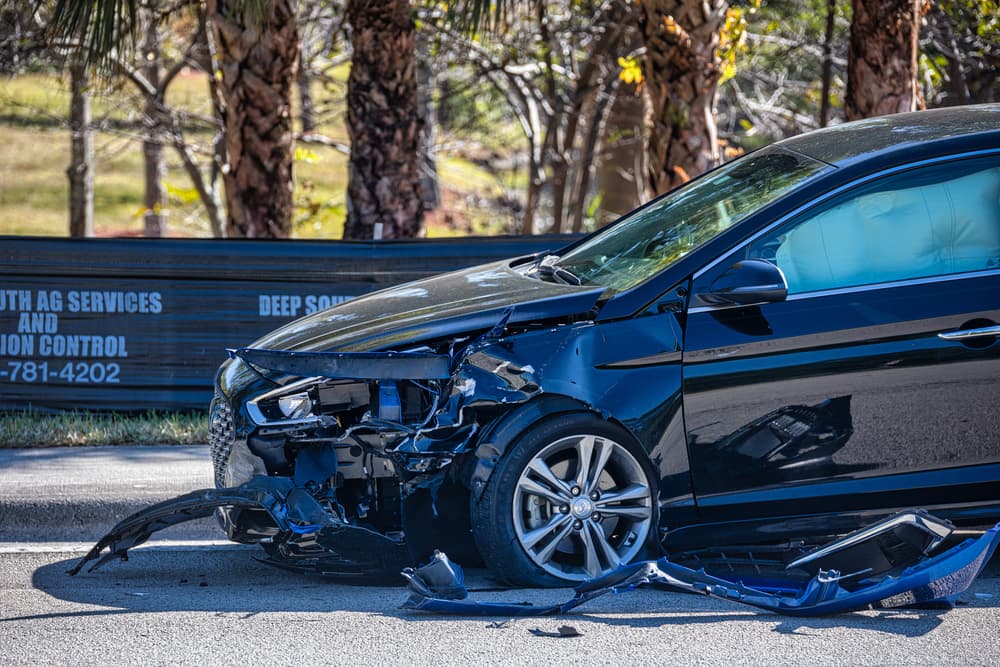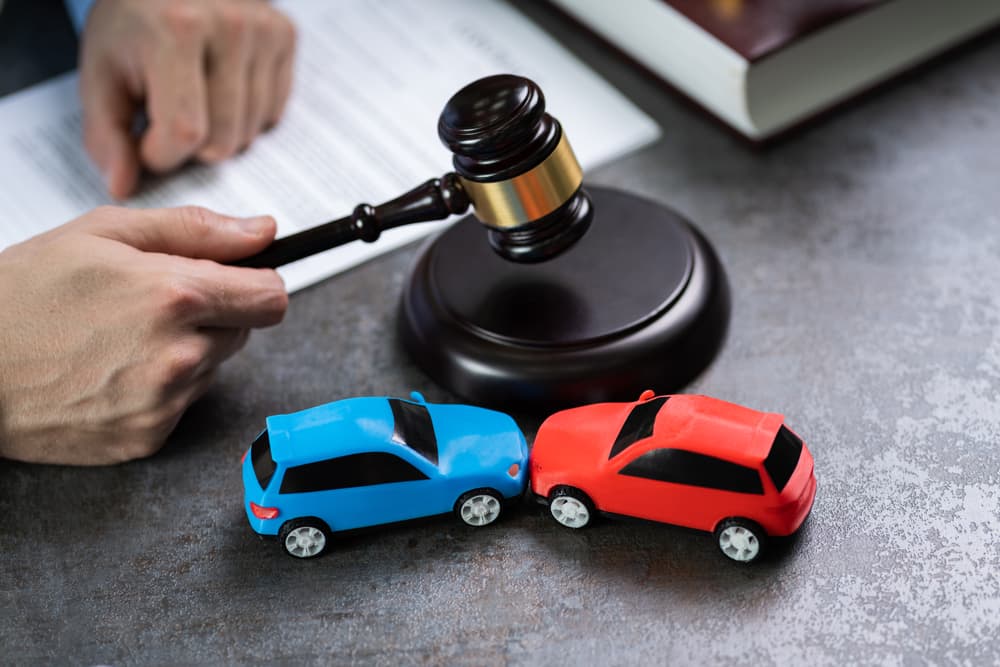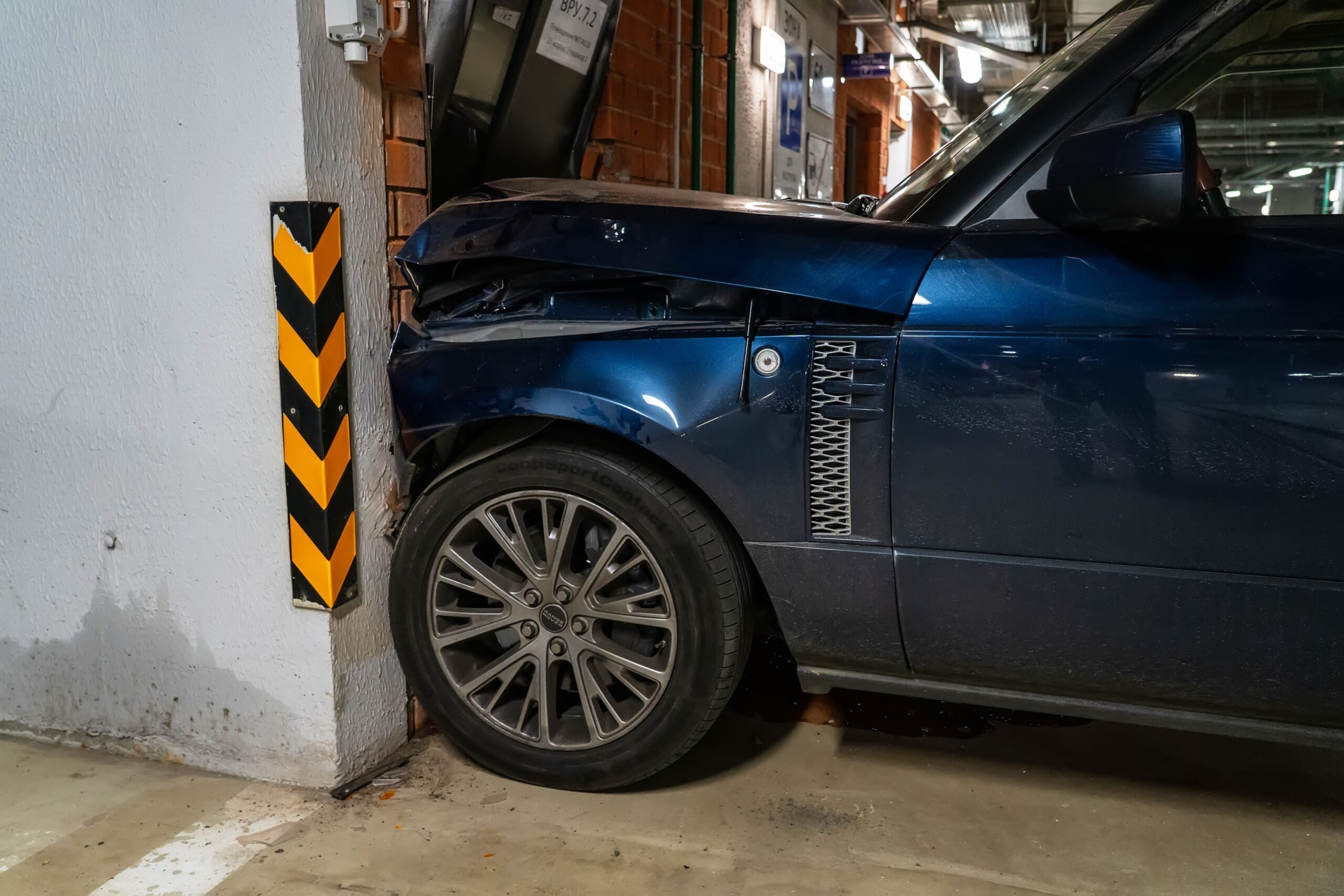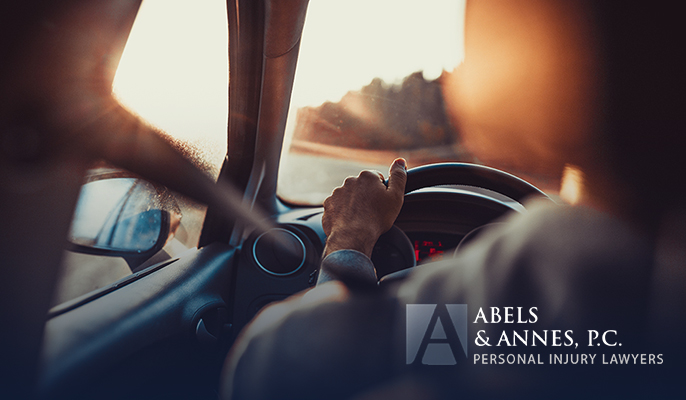Yes, in Illinois, you still recover financial compensation even if you were partially to blame for a car accident. The law that governs this is called "modified comparative negligence."
This rule means you may collect damages as long as you are not found to be 51% or more at fault for the crash. If you are found to be partially at fault (from 1% to 50%), your final compensation is reduced by your percentage of fault.
Insurance companies for the other driver conduct a thorough investigation, looking for any evidence to argue you were at fault. Our role is to keep them accountable and ensure no amount of blame is unjustly put on you.
If you have a question about how your actions might affect your car accident claim, call Abels & Annes, P.C. for a free consultation at (312) 924-7575.
Understanding the Most Important Rule in Your Case: Illinois’s 51% Fault System
After a crash, it's natural to replay the events in your mind. You might worry that because you were driving a few miles over the speed limit, or because you didn't brake a split-second sooner, you've lost any right to compensation for your injuries and vehicle damage.

This uncertainty is exactly what the other driver's insurance company hopes you feel. They know that unrepresented individuals assume any fault on their part means they have no case. This misunderstanding may lead people to accept a lowball settlement offer or abandon their claim altogether, leaving them to pay for medical bills and repairs out of their own pocket as the costs continue to climb.
Illinois law is designed to prevent this all-or-nothing outcome. The state follows a modified comparative fault rule, which is outlined in the Illinois statutes (735 ILCS 5/2-1116). This is the single most important legal concept for your case if you think you might be partly to blame for your car accident.
- What this means for you: As long as you are determined to be 50% or less at fault, you may still recover money.
- The 51% "Bar": The law creates a hard cutoff. If you are found to be 51% or more responsible for the accident, you are "barred" from recovering any damages from the other party.
- Analogy: Imagine a scale of responsibility. As long as the other party's fault is greater than yours, the scale tips in your favor, and you may file a claim. If your responsibility for the crash is more than 50%, the scale tips the other way, and your claim is blocked. Our job is to use evidence to ensure fault is assessed accurately.
How Is a Percentage of Fault Actually Decided?
Assigning a specific percentage of fault is a negotiation based on evidence. There is no automatic calculator that spits out a number. Initially, the insurance adjuster for the other party makes a determination based on their own investigation. If the case proceeds to court, it could ultimately be decided by a judge or jury.
The decision is based on a careful review of all available evidence. The goal is to piece together a clear picture of how the accident happened and who violated their duty of care on the road.
Here are the key pieces of evidence we use to build a case and argue fault:
- The Police Report: While not always admissible in court, the police report is one of the first documents an insurance company reviews. It contains the officer’s initial observations, diagrams of the scene, witness information, and sometimes a preliminary opinion on who violated a traffic law.
- Illinois Traffic Laws: We analyze the specific circumstances of your crash against the Illinois Vehicle Code. For example, if the other driver made an improper left turn or failed to yield, we use the specific statute they violated as direct evidence of their negligence.
- Witness Statements: Independent witnesses who saw the crash provide an unbiased account of what happened. We work to contact witnesses listed in the police report and find others who may have seen the collision.
- Physical Evidence: This includes everything from the location and severity of damage to your vehicles (which tells a story about speed and angle of impact) to skid marks on the road and debris from the crash.
- Photos and Videos: Dashcam footage, surveillance video from nearby businesses in Chicago, or even photos you took at the scene are powerful evidence. A short video clip resolves a "he said, she said" dispute.
- Expert Analysis: In complex cases, we may work with accident reconstructionists. These professionals use physics and engineering principles to create scientific models of the crash, showing how speed, braking, and driver actions contributed to the collision.
What Are Common Scenarios Where Fault Is Shared in a Car Accident?
Shared fault is more common than you might think. Many accidents are not caused by one single mistake, but by a combination of actions from multiple drivers.
Here are a few concrete examples of how fault might be divided in Illinois:
Left-Turn Collisions
- Scenario: A driver makes a left turn at an intersection and is struck by a car coming straight through from the opposite direction.
- How Fault is Shared: The driver turning left bears the majority of the fault for failing to yield. However, if the oncoming driver was speeding significantly or ran a red light, they would share a portion of the blame. For instance, a jury might find the turning driver 70% at fault and the speeding driver 30% at fault.
Rear-End Accidents at Sudden Stops
- Scenario: A driver slams on their brakes unexpectedly for no apparent reason, and the car behind them cannot stop in time.
- How Fault is Shared: There is a strong presumption that the rear driver is at fault. However, if the front driver had non-working brake lights or stopped erratically and without cause (an act known as a "brake check"), they could be assigned a percentage of the fault.
Lane-Change Accidents
- Scenario: One car begins to merge into another lane and collides with a car already in that lane.
- How Fault is Shared: The driver changing lanes is typically held responsible. But if the other driver was in the merging car's blind spot and suddenly sped up to prevent the merge, or if they drifted within their own lane, they could be found partially responsible. For example, the merging driver could be 80% at fault, and the other driver 20%.
How Is Fault Divided in Multi-Car Accidents in Illinois?
When two cars are involved in a crash, figuring out who's responsible is usually tough, but at least it’s straightforward. Add a third car (or more) and it gets messy fast. That’s where Illinois’s modified comparative negligence rule meets its limits: multiple parties, multiple percentages, and a lot of finger-pointing.
So how is fault actually sorted out when more than two drivers are involved?
First: The Rule Still Applies
The same basic law still governs these cases, 735 ILCS 5/2-1116. But in a three-car crash, the 51% line isn’t just about one other driver—it’s about your share of total fault compared to all involved parties combined.
That means a jury could assign 40% to you, 30% to one driver, and 30% to another. You’d still be eligible for a reduced car accident settlement. But if your share hits 51%, even if it’s split between two other vehicles, your claim is barred.
Second: The Investigation Gets More Complicated
Now you're dealing with multiple insurance companies, each doing their own investigation, each protecting their own insured driver. Everyone's looking for ways to shift blame off themselves and onto someone else.
Here’s how we help clarify what really happened:
- We gather all the crash reports from every driver involved—not just the one from your vehicle.
- We request dashcam or traffic cam footage, especially at busy intersections or highways.
- We reconstruct the crash timeline: who was in which lane, who braked when, who rear-ended who.
- We bring in accident reconstructionists in cases where the physical damage doesn’t line up with the stories being told.
Multi-car crashes usually involve more severe property damage, which actually helps tell the story. Crumple zones, the location of impact, and the way debris is scattered can all help establish sequence and speed.
Third: Common Multi-Car Scenarios and How Fault Is Split
- Chain Reaction Rear-End Collisions: The last car to hit may not be fully responsible especially if the car in front stopped suddenly or another driver was tailgating. Fault could be split between the middle and rear drivers, or all three.
- Highway Pileups: In snow, rain, or fog, crashes sometimes involve five or more vehicles. One driver might have lost control first, but everyone behind has a duty to maintain a safe following distance and adjust to conditions. Fault often ends up being divided in small percentages across several drivers.
- Intersection Collisions Involving Multiple Turns: When one car runs a red, another turns left, and a third is driving straight through, testimony from witnesses or nearby surveillance cameras becomes especially important. The exact light sequence, timing, and speed of each vehicle may all be up for debate.
Especially in a multi-car accident, the bigger picture matters: how everyone’s actions combined to cause the crash. Our job is to make sure that picture is complete and accurate.
"I'm Sorry, It Was My Fault"—How a Simple Phrase Complicates Your Claim
In the confusing moments after a crash, it's human nature to be polite or even apologetic. You might say, "I'm so sorry, I didn't see you," out of shock and concern for the other person.

You must understand that an insurance company will not see this as simple politeness. They will record it and use it as an admission of guilt. An adjuster’s job is to protect their company’s financial interests, which means finding reasons to reduce or deny your claim. A statement like "it was my fault" is misinterpreted into a full confession, even if the facts show the other driver was primarily responsible.
After a car accident, your words carry significant weight. Knowing what to say, and what not to say, protects your rights.
- Don't: Do not apologize, admit any fault, or speculate about what happened when speaking to the other driver or their insurance company.
- Do: Be courteous. Ask if the other person is okay and exchange insurance information as required by law.
- Instead of saying, "I didn't see you," stick to the objective facts you know. When the other driver's insurer calls, say: "I'm not prepared to give a statement right now. I need to focus on my medical care."
- Let us handle the communication. When you work with our firm, you no longer have to worry about saying the wrong thing. We instruct the insurance companies to direct all communication through our office. This protects you from accidentally weakening your own case.
How Will Being Partially at Fault Affect My Final Settlement?
The math behind a comparative fault reduction is straightforward. As mentioned before, the total value of your damages is calculated first, and then that amount is reduced by your percentage of fault.
Let's break down what "damages" include:
- Economic Damages: These are the verifiable financial losses you've suffered.
- All medical bills (past and future)
- Lost wages from being unable to work
- Property damage to your vehicle
- Non-Economic Damages: These are intangible losses that don't have a direct price tag.
- Pain and suffering
- Emotional distress
- Loss of enjoyment of life
Frequently Asked Questions About Shared Fault Accidents
What if the other driver and I both say the other was at fault?
This is a very common situation. When it's one driver's word against another's, the insurance companies and lawyers look to objective, third-party evidence to break the tie. This includes the police report, witness statements, vehicle damage, and any available video footage.
Will my insurance rates go up if I’m found partially at fault?
Your insurance rates may increase after any accident where you are found to have some degree of fault. However, the potential value of the injury claim you bring against the other driver typically far outweighs the potential increase in your insurance premiums.
If I’m 50% at fault, what happens?
If you are found to be exactly 50% at fault, you may still recover damages in Illinois. Your total settlement would be reduced by 50%. The 51% rule is a strict cutoff; 50% allows recovery, while 51% does not.
How long do I have to file a car accident lawsuit in Illinois?
In Illinois, you generally have a two-year statute of limitations for personal injury claims and five years for property damage claims. If the claim is against a government entity, such as the City of Chicago, the deadline is much shorter—sometimes just one year.
Should I give a recorded statement to the other driver’s insurance company?
No. You are not legally obligated to provide a recorded statement to the other party's insurer. These statements are used to find inconsistencies in your story and gather information that is used to assign more fault to you. It is best to decline until you have spoken with an personal injury attorney.
Protecting Your Rights When Fault Isn't Clear
When the facts of an accident are complicated, having someone on your side to present your case in the strongest possible light is key. We handle car accident claims across Chicago and Illinois, and we understand the challenges you face when fault is disputed.

The sooner we begin investigating and preserving evidence, the stronger your case will be. If you’re wondering what your claim might be worth, even if you believe you were partly at fault, give us a call. Contact Abels & Annes, P.C. today for a free, no-obligation case review at (312) 924-7575.



